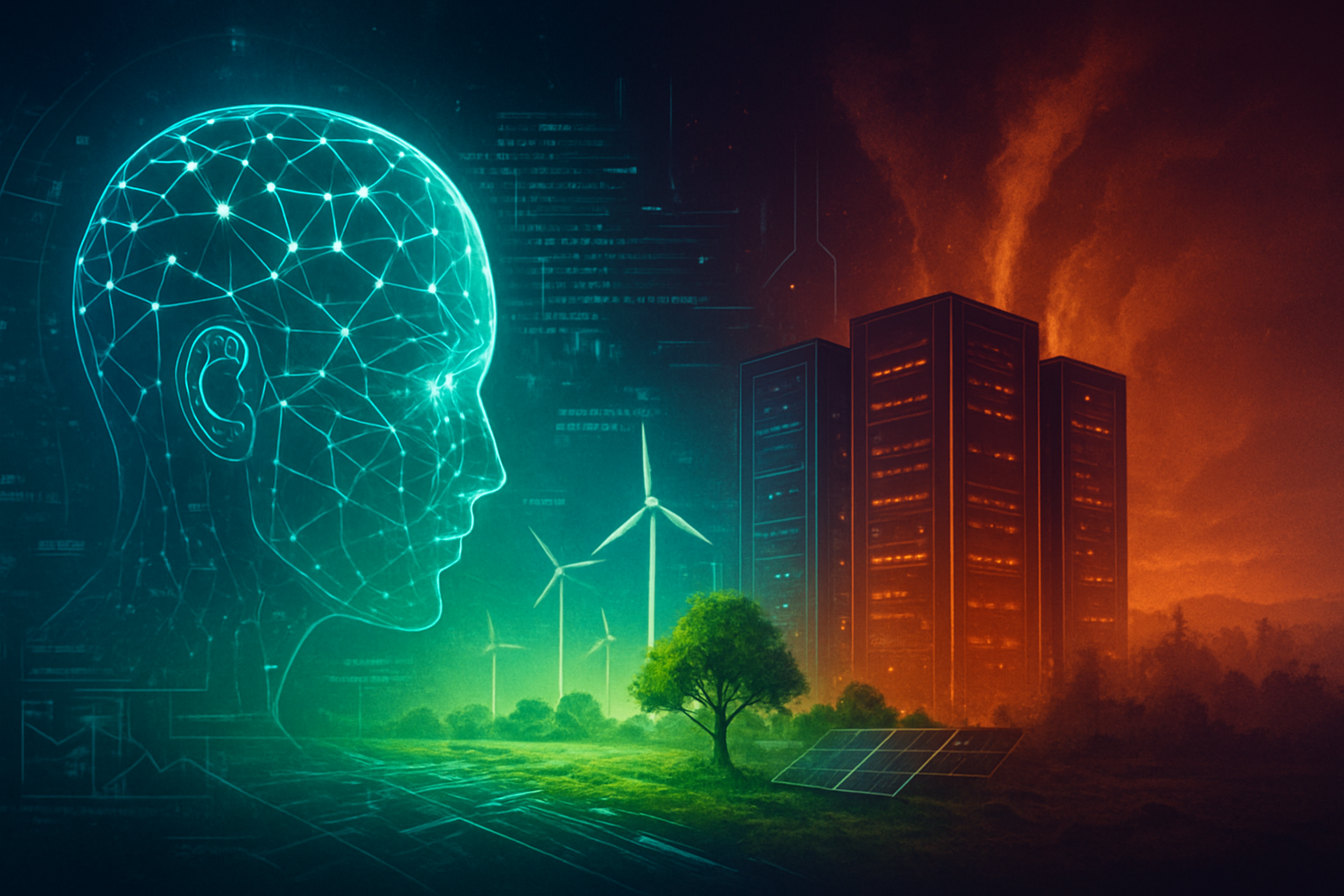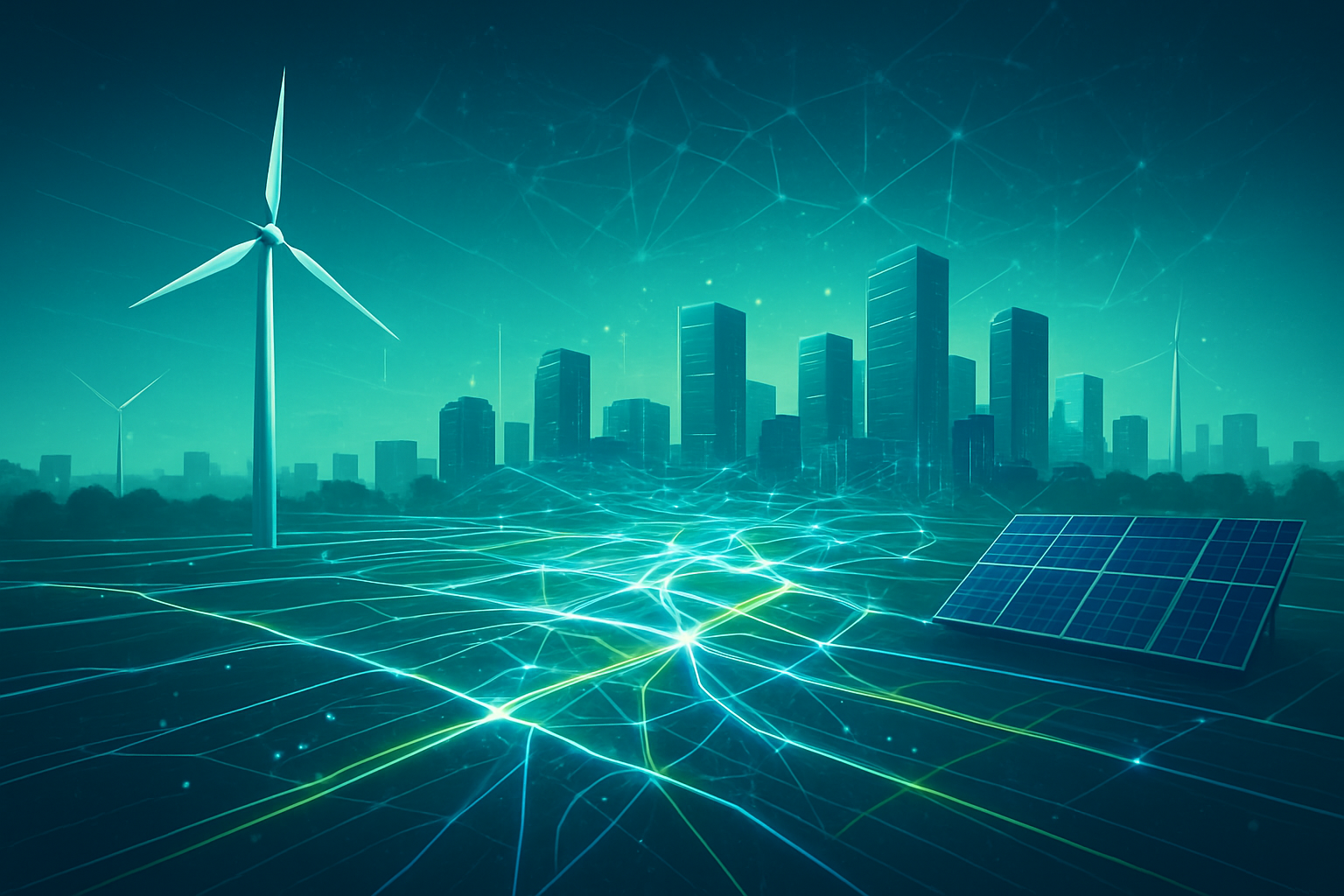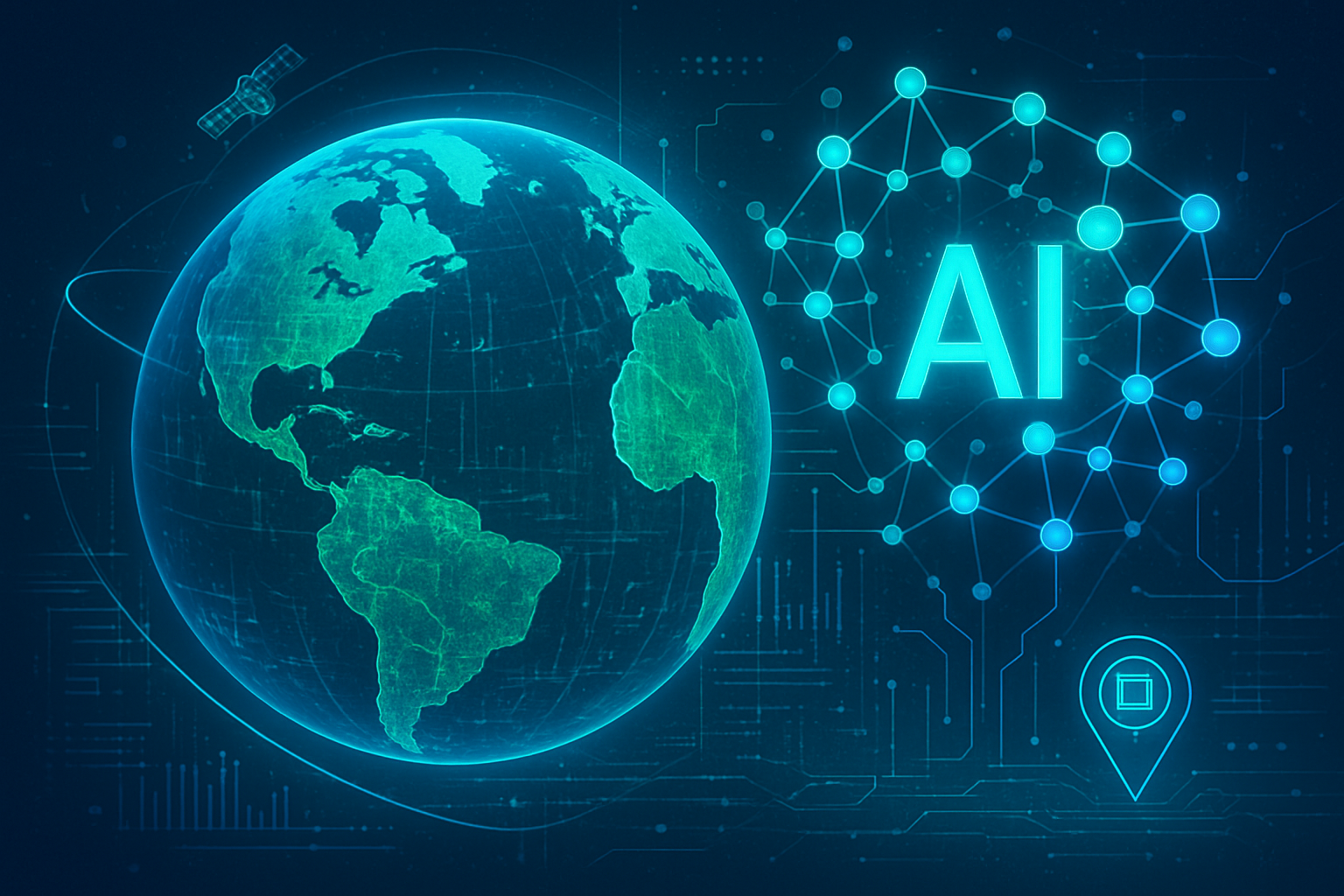The silent depths of our oceans are beginning to surrender their secrets, thanks to a powerful new synergy between advanced seafloor mapping technologies and artificial intelligence. This groundbreaking development is rapidly transforming our understanding of climate change and the intricate dynamics of marine ecosystems, offering unprecedented insights into processes that have long remained a mystery. The immediate significance of this technological leap cannot be overstated: it promises to enhance disaster preparedness, optimize marine resource management, and accelerate vital conservation initiatives on a global scale.
For too long, the vast majority of the ocean floor remained uncharted, a critical blind spot in our efforts to model Earth's climate and protect its biodiversity. Now, with high-resolution seafloor data feeding sophisticated AI models, scientists are gaining a clearer picture of the ocean's role as a climate regulator, its capacity for carbon sequestration, and the delicate balance of its myriad ecosystems. This fusion of data and intelligence is not merely an incremental improvement; it represents a fundamental shift in how we observe, analyze, and predict the future of our planet's most vital natural resource.
Unveiling the Ocean's Operating System: Technical Breakthroughs in AI-Powered Oceanography
The current revolution in oceanography is driven by a confluence of specific AI advancements, sophisticated data acquisition, and novel predictive modeling techniques. At its core, this involves leveraging machine learning (ML) and deep learning (DL) algorithms to process and interpret massive, multi-modal datasets derived from new seafloor mapping efforts. These datasets include high-resolution bathymetry, sub-bottom profiles, acoustic backscatter, and increasingly, biological and chemical sensor data collected by autonomous underwater vehicles (AUVs) and remotely operated vehicles (ROVs).
Technically, AI models are now capable of performing real-time analysis of sonar data collected by AUVs, generating detailed 3D maps of underwater features like trenches, ridges, and hydrothermal vents with unprecedented speed and accuracy. Beyond mere topography, these AI systems can classify seafloor habitats, identify geological formations, and even detect changes in sediment composition, which are crucial for understanding carbon cycling. Machine learning algorithms are particularly adept at identifying subtle patterns and anomalies in this vast data, such as indicators of ecosystem stress or the presence of specific marine species from bioacoustic signals. This differs significantly from previous approaches, which often relied on laborious manual interpretation of limited sonar data, resulting in coarser maps and slower analysis. Older methods were also less effective at integrating diverse data types, such as correlating geological features with biological communities, a task at which modern AI excels. Initial reactions from the AI research community and oceanographers have been overwhelmingly positive, highlighting the transformative potential for accelerating discovery and improving environmental stewardship. Experts note that AI's ability to handle "big data" from the ocean is finally allowing scientists to move from descriptive analysis to truly predictive modeling.
One key technical capability is the development of AI models that can integrate seafloor data with other oceanographic parameters, such as sea surface temperature, currents, salinity, and atmospheric data. This allows for the creation of comprehensive Earth System Models that are far more accurate in forecasting climate change impacts. For example, deep learning networks can now predict regional sea level rise and shifting rainfall patterns by analyzing the interaction between deep-ocean currents, seafloor topography, and global heat distribution. Furthermore, AI is being used to develop "digital twins" of specific ocean regions, allowing scientists to simulate various environmental scenarios and test the efficacy of different conservation or management strategies in a virtual environment before implementing them in the real world. These advancements represent a significant leap from traditional, physics-based ocean models that, while robust, often struggled with the computational complexity and data integration challenges presented by the sheer scale and heterogeneity of oceanographic data.
Riding the AI Wave: Impact on Tech Giants, Startups, and the Blue Economy
The burgeoning field of AI-powered oceanography is creating significant opportunities and competitive shifts across the tech industry, benefiting established giants, specialized startups, and research institutions alike. Companies involved in advanced sensor technology, autonomous systems, data analytics, and cloud computing stand to gain immensely.
Tech giants like Google (NASDAQ: GOOGL), Microsoft (NASDAQ: MSFT), and Amazon (NASDAQ: AMZN) are poised to benefit through their cloud computing divisions, which provide the essential infrastructure for storing, processing, and analyzing the colossal datasets generated by seafloor mapping and oceanographic research. Their AI platforms and machine learning services are becoming indispensable tools for scientists and developers in this space. These companies are also likely to invest in or partner with startups developing specialized AI algorithms for ocean data, solidifying their positions as foundational technology providers for the emerging "Blue Economy." The competitive implication is that companies with robust AI and cloud capabilities will increasingly become gatekeepers for advanced oceanographic research and commercial applications.
Meanwhile, a new wave of startups specializing in marine robotics, AI-driven data interpretation, and environmental forecasting are emerging as key players. Companies like Saildrone, which develops uncrewed surface vehicles for ocean data collection, and various AI firms focused on geospatial analysis, are seeing increased demand. These startups often possess niche expertise in applying AI to specific oceanographic challenges, such as identifying climate refugia, tracking marine plastic pollution, or optimizing sustainable fisheries management. Their agile development cycles and specialized solutions can disrupt existing, more traditional oceanographic survey companies, pushing them to adopt AI more rapidly or risk falling behind. The market positioning for these startups is often centered on providing highly accurate, cost-effective, and scalable solutions for data collection and analysis, which were previously unattainable or prohibitively expensive.
The potential disruption extends to traditional maritime industries as well. Shipping companies could leverage AI-driven oceanographic forecasts for more efficient routing, reducing fuel consumption and emissions. Fisheries management will be transformed from reactive to proactive, with AI models predicting fish migration patterns and optimal harvesting times, impacting major seafood corporations. Furthermore, the defense and energy sectors, particularly offshore wind and oil and gas, will benefit from more precise seafloor mapping and environmental impact assessments, potentially leading to new product offerings in predictive maintenance and operational efficiency based on AI insights.
Charting a New Course: Wider Significance and Ethical Considerations
The integration of AI with new seafloor mapping data represents a profound shift in the broader AI landscape, moving beyond consumer applications and enterprise optimization into critical environmental stewardship. This development fits squarely within the trend of "AI for Good," demonstrating how advanced computational power can be harnessed to address some of humanity's most pressing challenges, particularly climate change and biodiversity loss. It underscores the increasing importance of interdisciplinary AI, where machine learning specialists collaborate closely with oceanographers, marine biologists, and climate scientists.
The impacts are far-reaching. On one hand, it promises an unprecedented ability to monitor the health of our planet, offering early warning systems for ecological collapse, predicting the spread of invasive species, and identifying areas most vulnerable to climate impacts. This enhanced understanding can directly inform policy decisions, guiding the creation of more effective marine protected areas and sustainable resource management strategies. It also provides a more granular view of the ocean's role in the global carbon cycle, potentially refining our understanding of carbon budgets and the efficacy of various climate mitigation strategies.
However, this advancement also brings potential concerns. The immense volume of data collected raises questions about data ownership, privacy (especially concerning indigenous coastal communities), and equitable access to these powerful analytical tools. There's also the risk of algorithmic bias, where AI models, if not carefully trained and validated, could perpetuate or even amplify existing biases in data collection or scientific interpretation, leading to misinformed environmental decisions. Furthermore, the increased efficiency of resource identification through AI could, paradoxically, lead to intensified exploitation if not coupled with robust regulatory frameworks. Compared to previous AI milestones, such as breakthroughs in image recognition or natural language processing, this development stands out for its direct and tangible impact on Earth system science and its potential to inform global environmental policy, marking a significant maturation of AI's application domain.
Horizons Unfolding: Future Developments in AI Oceanography
The road ahead for AI-powered oceanography is rich with expected near-term and long-term developments, promising even more sophisticated insights and applications. In the near term, we can anticipate a significant expansion of global seafloor mapping efforts, driven by a new generation of AI-enabled AUVs that can autonomously navigate, collect data, and even perform preliminary analysis on the fly, reducing the need for human intervention in hazardous environments. This will rapidly fill the vast unmapped areas of the ocean floor, providing a complete baseline for future research.
On the horizon, potential applications include the development of real-time, global ocean "digital twins" that continuously update with new data, offering predictive capabilities for everything from tsunami warnings to the precise tracking of ocean currents for search and rescue operations. AI will also become instrumental in guiding large-scale ocean restoration projects, such as coral reef rehabilitation or seagrass meadow regeneration, by identifying optimal planting locations and monitoring recovery progress with unparalleled accuracy. Furthermore, experts predict that AI will play a crucial role in the sustainable harvesting of new marine resources, such as deep-sea minerals or novel biotechnological compounds, by precisely mapping their locations and assessing potential environmental impacts before extraction.
Challenges that need to be addressed include the standardization of oceanographic data formats to ensure interoperability between different AI models and research institutions. The development of robust, explainable AI models that can clearly articulate their predictions and the underlying evidence will also be critical for building trust among policymakers and the public. Cybersecurity for autonomous marine systems and data infrastructure will also be paramount. Experts predict that the next decade will see a transition from localized AI applications to a globally interconnected network of AI-powered ocean monitoring and forecasting systems, fundamentally changing how humanity interacts with and manages the marine environment.
A New Era for Ocean Science: A Comprehensive Wrap-up
The convergence of new seafloor mapping data and AI-powered predictive modeling marks a pivotal moment in the history of ocean science and environmental forecasting. The key takeaways are clear: AI is enabling unprecedented detail in understanding the ocean's role in climate regulation, offering precise insights into marine ecosystems, and empowering more effective conservation strategies. It is transforming oceanography from a data-sparse, reactive field to a data-rich, proactive discipline capable of anticipating environmental changes and guiding human responses.
This development's significance in AI history lies in its demonstration of AI's capacity to move beyond specialized tasks into complex, real-world environmental systems, tackling challenges of global scale and profound societal impact. It underscores AI's potential as a critical tool for achieving sustainable development goals and mitigating the effects of climate change. The long-term impact will likely be a more informed and proactive approach to marine stewardship, leading to healthier oceans and a more resilient planet.
In the coming weeks and months, we should watch for continued advancements in autonomous marine robotics, the public release of more comprehensive seafloor datasets, and new collaborations between AI companies and oceanographic research institutions. The evolution of open-source AI tools specifically designed for ocean data analysis will also be a key indicator of the democratization of this powerful technology. As the AI-driven exploration of our oceans continues, we stand on the cusp of unlocking secrets that will redefine our relationship with the blue heart of our planet.
This content is intended for informational purposes only and represents analysis of current AI developments.
TokenRing AI delivers enterprise-grade solutions for multi-agent AI workflow orchestration, AI-powered development tools, and seamless remote collaboration platforms.
For more information, visit https://www.tokenring.ai/.









